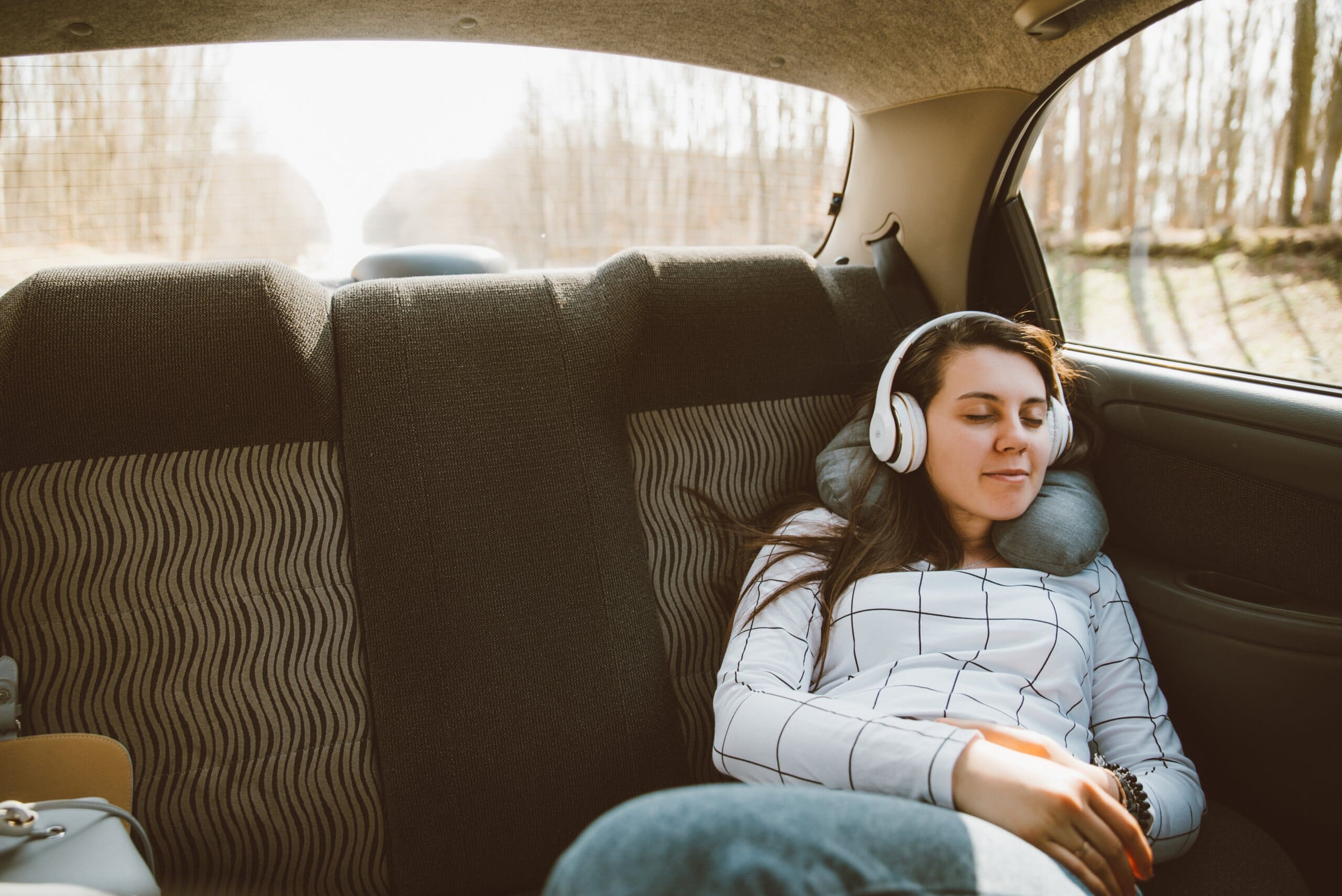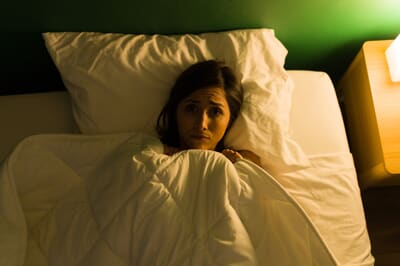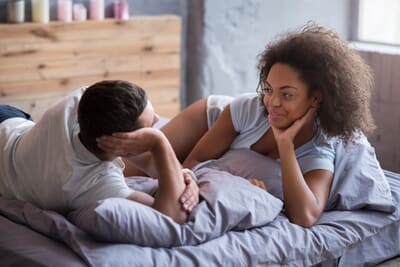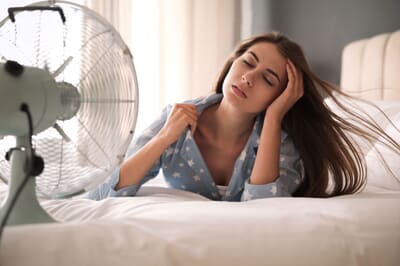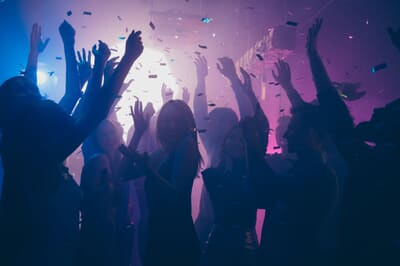No matter if you live in the heart of Manhattan, along the sunny beaches of the French Riviera, or beneath the windswept skyscrapers of central London, nowadays, we’re all pretty well-versed in trying to balance the hecticness that comes with working a day job and taking time out for ourselves throughout the week.
But even the most flexible work-life balance plan can collapse when put under enough pressure, which makes it all the more important to squeeze in a holiday or two to wash away the stress, catch up on sleep, and disconnect yourself from your busy schedule.
And it seems we’re not the only ones feeling this sentiment! As many as 94% of travellers in the US and Europe are now searching exclusively for wellness destinations – specifically ones that focus on promoting good sleep hygiene practices while providing opportunities to disengage from the online and working worlds for extended periods.
In fact, this is exactly what sleep tourism is - a wellness getaway for visitors who want nothing more than to spend a week in a cosy space catching up on some much-needed sleep.
But this begs the question; if you’re seeking as restorative a wellness holiday as possible, which are the best cities in the US and Europe to travel to?
To find out, we analysed the most visited cities in America and Europe and ranked them from best to worst in terms of sleep tourism. These scores were calculated based on several important sleep and wellness-related factors, such as light pollution, 4+ star hotels, average sun hours, and more.
Find out which cities are the best sleep tourism destinations below!
Which are the five calmest cities in America for a sleep holiday?
From the heart of Colorado to the sunny depths of Texas, here are the top five cities in America for anyone looking to treat themselves to a sleep tourism getaway this year:

1. Colorado Springs – Colorado
Nestled snuggly in the very heart of Colorado, the aptly named Colorado Springs stands out as the best city in America for sleep tourism and wellness enthusiasts alike. Scoring a fantastic 74.68 points out of 100, Colorado Springs delivers on a sleep vacation for all the right reasons.
For starters, Colorado Springs was number one for light pollution, scoring an excellent 2.4 mcd/m2 – so you know that no matter what you get up to on your wellness retreat, you won’t be kept awake by the glowing lights of your neighbours into the early hours of the morning.
But it’s not just light pollution levels that Colorado Springs has going for it, as the city is also home to the most walking trails per 100,000 at 176, which is no surprise when you consider that it’s located right beside some of the most spectacular national forests in the US. As well as having the second-highest percentage of 4+ star hotels on our list at 18.7%.
And for the safety-conscious travellers out there, you’ll be pleased to know that Colorado Springs placed sixth for this factor with a score of 58.5, giving you the peace of mind you need to really kick back and relax in its gorgeous surroundings.
2. Tucson – Arizona
Next up, we’re hopping just over the state border to Arizona – specifically to the quiet city of Tucson, which sits far in the state’s south. However, the city’s out-of-the-way nature is what makes it so perfect for a sleep tourism getaway, hence Tucson’s brilliant score of 69.62.
Indeed, straightaway, Tucson stands out by virtue of having the highest percentage of 4+ star hotels at 20.1%, not to mention having the joint-second highest number of average sun hours per day at 10.6 – giving you plenty of time to get outside and take in the sights while earning a well-deserved tan.
On top of this, Tucson also had the 5th best light pollution levels and the 5th highest number of walking trails per 100,000 at 3.6 mcd/m2 and 116 respectively. However, Tucson was stopped from taking the top spot due to its slightly lower safety with a score of 45.43 – not bad by any means but certainly lower than Colorado Springs.
3. Raleigh – North Carolina
Wrapping out our top three, and standing in stark contrast to the sun-soaked plains and prairies of Colorado and Arizona, we have Raleigh in North Carolina. Despite being the state capital, Raleigh scored an excellent 63.33, making it a surprisingly strong contender amongst our best US sleep tourism hotspots.
Touching on light pollution levels first, even though Raleigh is quite the bustling metropolis, it still managed to place 7th overall for this factor, scoring just 4.5 mcd/m2. Better yet, Raleigh came joint 6th for traffic congestion at only 18%, proving that the city absolutely quietens down after dark to facilitate some seamless shuteye!
Finally, Raleigh proved to be the 3rd safest of the US cities we ranked, scoring a phenomenal 60.14, while also having the 3rd highest levels of soundproofed hotel rooms at 23.7%. In fact, Raleigh’s only downside appears to be its low sun hours, where it placed in the middle of the table – though with 8.3, you won’t be short of daylight.
4. El Paso – Texas
Moving right down to the southern border for our fourth best sleep tourism city in the US, we have El Paso, Texas. Sat slap bang on the US border with Mexico, El Paso is located well away from many of the main US highways and tourist hotspots, which may help to explain its great score of 62.69.
And right away, El Paso proves itself to be the safest city in America for wellness holidays, scoring a phenomenal safety score of 67.49. Not only that, but El Paso again has the joint-second highest number of sun hours, sharing the spot with Tucson and getting 10.6 hours of glorious daytime sunlight for you to read, walk, and meditate beneath.
And, much like all of the cities in our top 5, light pollution levels in El Paso are very good, seeing the city score 5.1 mcd/m2, which put it 12th overall. Add to this its joint 6th position for traffic congestion alongside Raleigh at 18%, and El Paso certainly makes a strong case for being a sleep tourist hotspot.
5. Omaha – Nebraska
Last, but by no means least, to wrap out our top 5, we have the city of Omaha in Nebraska. With an overall total score of 61.13, Omaha is similarly well-equipped for an extended sleep holiday as the rest of our top US cities.
To start with, Omaha has the lowest percentage of traffic congestion in our ranking at just 12%! As well as the 6th highest percentage of hotels with soundproofing and blackout curtains at 20.4% - all while holding the distinction of being the 11th safest city on our list thanks to a score of 54.28.
Further solidifying its place as a fine choice for a sleep getaway, Omaha also came 9th for 4+ star hotels at 14.8%, letting you nap in luxury as and when you need to. However, due to a low number of walking trails and fitness centres, Omaha does slip slightly further down on its overall score – hence its respectable 5th place.
Which are the five calmest cities in Europe for a sleep vacation?
Having looked at the top 5 American cities for a sleep getaway, let’s now see how Europe compares. Do their top 5 cities have similarly excellent scores, or does the US have a better wellness infrastructure in place for those wanting to grab some much-needed shuteye?

1. Funchal – Portugal
Kicking off the European side of sleep tourism hotspots, we have the sleepy Portuguese city of Funchal. The capital city of the Madeira Islands, Funchal has a brilliant total score of 75.62, thanks in no small part to its island location and superb positioning for a variety of our chosen wellness factors.
Case and point, Funchal had the 2nd lowest level of light pollution on our list at 1.7 mcd/m2 – lower than any of the cities in our US ranking – while also having a sublime safety score of 80.03, the best on our list and 13 points more than the safest of our US cities – El Paso!
And the good news keeps getting better for wellness enthusiasts visiting Funchal, as it also has the highest number of walking trails per 100,000 people at 23.7 while being no slouch when it comes to health and fitness centres either – with 7.6 per 100,000 residents.
Even traffic is of no issue in Funchal, with the city placing 4th for congestion percentage at 22%, while also having the 5th highest percentage of 4+ star hotels at 22.1%. In other words, Funchal is the perfect sleep tourism destination for anyone looking to catch up on sleep and detach from the busy nature of modern life.
2. Bergen – Norway
Flying from the sunny sands of Portugal to the brisk coast of Scandinavia, a trip to Bergen might mean you need to wrap up warm, but the city's chilled and laid-back atmosphere is exactly what you want when it comes to constructing a sleep holiday and is party why Bergen scored an excellent total of 66.59 points.
Like Funchal, traffic congestion is no real issue in Bergen, in fact, the city has the lowest congestion levels in our European ranking, sitting at only 14%. This was then followed by Bergen having the 4th best safety score overall at 76.02 and the 7th best light pollution levels at 2.6 mcd/m2, all essential areas to consider when planning any relaxing getaway.
And if you’re a bit of a fitness enthusiast, then Bergen certainly has your needs covered too, with the city having 4.7 health and wellness clubs per 100,000 residents (including plenty of those famed Scandinavian Saunas), making it ideal for those who like to sweat it out as part of their regular wellness routine.
3. Lausanne – Switzerland
Secluded away on the edge of Lake Geneva, Lausanne offers visitors a peaceful waterfront vista in one of the quietest cities in the Swiss countryside. Scoring 56.43 out of 100, Lausanne is definitely the place to be if you want to mix casual daytime mindfulness with slow, restful evenings.
Touching on this last point first, Lausanne actually has the lowest light pollution score on our list of European cities at 1.3 mcd/m2, as well as the 6th best percentage of soundproof and blackout hotel rooms at 25.4%, immersing you in the ideal sleeping environment to get an uninterrupted 8 hours every night.
Not only that, but Lausanne’s safety score currently sits at an excellent 72.73, despite being 14th on our list for this factor. Add to this the city's low congestion rates of 28% (the 8th best) and Lausanne offers sleep tourists a simple and easy-going option for a wellness retreat.
4. Parma – Italy
Already a fantastic destination for sunny weather and good food, when it comes to laid-back cities in Italy, you can’t do much better than Parma for a wellness holiday. Boasting a solid total score of 55.17, Parma has plenty to offer guests besides famed Mediterranean hospitality.
First, Parma has the 2nd highest percentage of 4+ star hotels at 25% - only beaten by fellow Italian city, Naples – alongside having the joint 5th lowest congestion rates (24%) and 6th lowest light pollution levels (2.8 mcd/m2), all of which is exactly what you want to hear about when planning a wellness retreat.
And, perhaps to no one’s surprise, Parma had the best average sun hours in our top 5, coming in joint 11th with 8.3 hours per day. Indeed, like Tucson in the US, the only real factor that seems to be holding Parma back is its safety score, which sits at a lower, but respectable 57.06.
5. Ghent – Belgium
Finally, to round off our top 5 best European cities for sleep tourism, we have the Belgian port city of Ghent. Landing a decent score of 54.58, Ghent placed solidly for all factors in our ranking, providing a great middle-ground option for anyone seeking a cost-effective and local well-being retreat.
In terms of accommodation, luxury is certainly the name of the game when it comes to staying in Ghent, as the city placed 4th for the percentage of 4+ star hotels at 24.1%, while sneaking into 5th place for low light pollution levels at 2.7 mcd/m2, letting you catch up on all the sleep you need while you’re away.
On top of this, Ghent had some of the lowest congestion percentages at 26% (6th best), and a great safety score of 74.56. Though with low walking trail options and exercise studios available, Ghent can’t quite crack into our top 3.

Why are wellness holidays so important?
As you can see from our data, there are more than a few cities in the US and Europe that are well suited to providing the sorts of sleep tourism and wellness getaways that are becoming so popular as of late.
But why exactly are these sorts of wellbeing holidays important? Could we not just look for local alternatives rather than going through the stress that comes with travelling to another country or state?
Well, as MattressNextDay's Senior Sleep Expert and CEO, Martin Seeley, puts it:
“While it’s certainly possible to find the sorts of well-being facilities and workout spaces listed in our study locally, there’s something different about taking the time to travel to a brand-new location in order to detach and unwind from our everyday lives.
“Not only are new destinations exciting to visit, but by indulging in a relaxing trip with the aim of catching up on sleep and touching base with yourself, you’ll find it that much easier to shake off any stress that might be clinging to you.
“And, naturally, wellness holidays like these are all about indulging in a bit of luxury and putting ourselves first, giving you the perfect excuse to sleep in later and take it easy while resetting your body clock.”
Of course, as relaxing as a sleep getaway might be, travelling to any destination can be a stressful experience in and of itself, not to mention the difficulties that can sometimes come with trying to get to sleep in a new place.
Make the most of your sleep holiday
So, to help make your sleep tourism trip as restful as possible, here are our top 5 tips for getting quality rest on holiday:
- Be conscious of jet lag – while not always an issue, if you’re travelling through multiple time zones to reach your holiday destination, there’s a chance you may experience jet lag. But while jet lag is unavoidable, by operating on the same time schedule as your destination once you set off, you can offset the worst effect and get to sleep on time.
- Set up your sleep space – no matter where you choose to stay for your wellness holiday, it’s important that you set up your sleep space to match your own personal preferences. Take advantage of hotel air-con to set a comfortable temperature and make sure you hang the ‘do not disturb’ sign up if you want to lie in without interruption.
- Use earplugs and a sleep mask – as nice as blackout blinds and soundproofing are, it’s not always possible to find hotel rooms with such options, which makes having a good pair of earplugs and a comfortable eye mask essential for getting that much-needed shuteye.
- Don’t break from your routine – although it might be tempting to stay out late on vacation and experience the local nightlife, if your goal is to improve your sleep, then stick to your usual bedtime routine and get to bed on time each night to maintain a comfortable and rejuvenating sleeping rhythm.
- Avoid large hotels – lastly, if possible and within your budget, consider avoiding larger hotels in favour of small BnBs or other lodging options. These are likely to be quieter and may provide a much more comfortable sleeping experience compared to a standard hotel room.
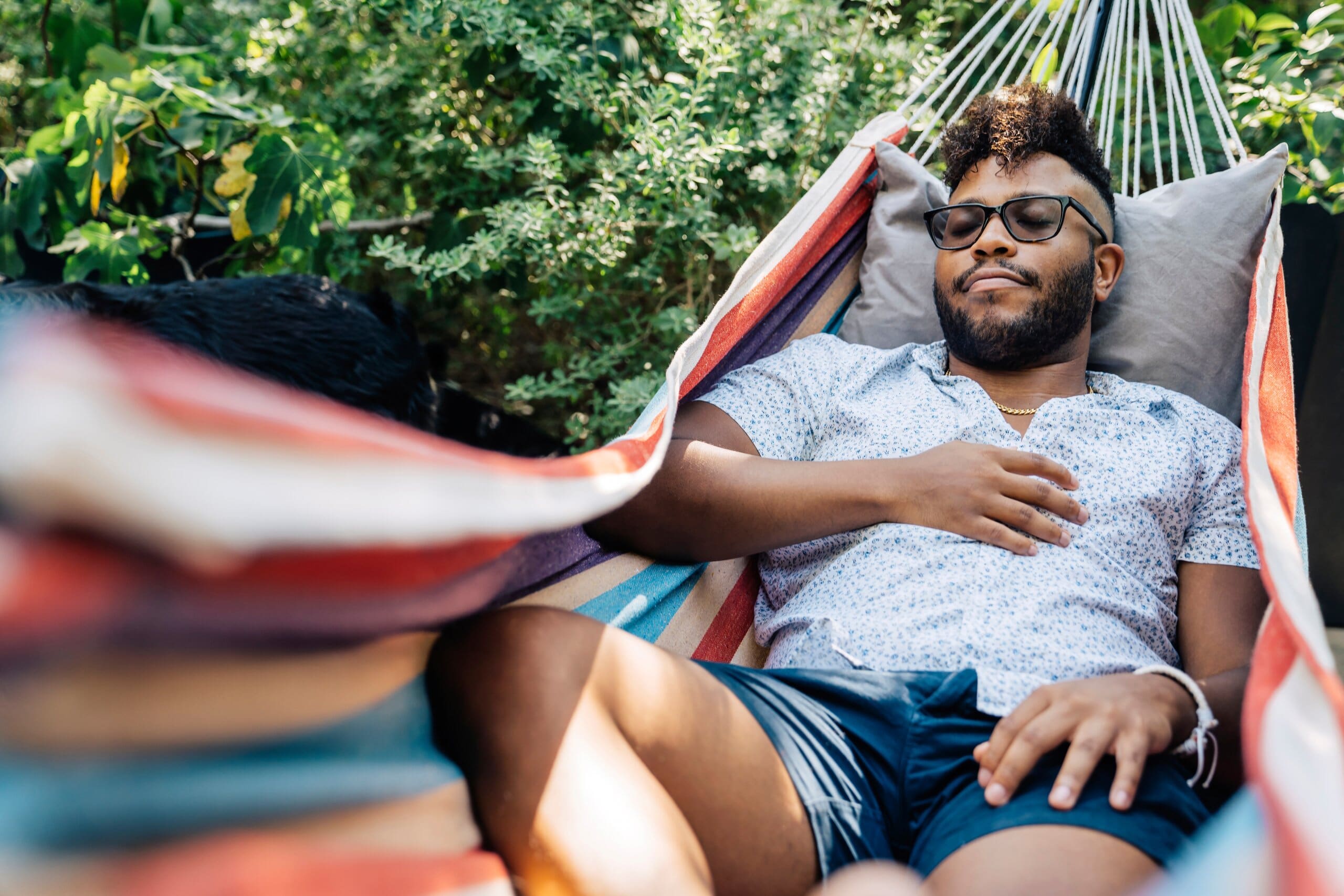
Improve your sleep at home with MattressNextDay
So, there you have it; America and Europe's calmest cities that are perfect for your next sleep holiday!
If you’re like us, you’re probably already getting excited at the idea of planning your next wellbeing holiday, but even a solid week of sleep in a laid-back location won’t help you get better rest at home. Investing in your sleep at home is just as, if not more, important so that you can improve your quality of sleep overall.
Thankfully, at MattressNextDay, we know how to help you get the sleep you deserve all year round, not just when on holiday. Whether it’s a brand-new super-king mattress that’s perfectly cushioned or a replacement bed frame that won’t squeak in the night, we’ve got everything you need to make your nightly sleeping experience at home as cosy and comfortable as possible!
Find your new mattress today and don’t forget to take advantage of our free, next-day delivery service. And for more tips and advice on finding the right bed for you, be sure to check out our Snooze News blog!
Methodology
This dataset contains 2 rankings. One ranks 50 US cities and the other ranks 60 European cities, with scores based on how good they are for sleep tourism.
To do this, 8 different factors were used. Once the data for the factors was collected, the factors were then normalised to provide each factor with a score between 0 and 1. If data was not available, a score of 0 was given.
The normalised values were then summed and multiplied to give each location a total score out of 100. The locations were then ranked from highest to lowest, based on their total scores.
The factors used were as follows:
- Light pollution – the average light pollution brightness levels, in mcd/m2, in each city. Calculated from an average of 3 points in each location. [Weighted 2x]
- Traffic congestion – the average congestion level in each city, as of 2024, according to Tomtom. [Weighted 2x]
- Safety score – a score representing the safety levels in each city, according to numbeo.
- Hotels 4 star+ - the percentage of TripAdvisor hotels in each city that are rated at least 4 stars.
- Hotels with soundproof rooms/blackout curtains – the percentage of TripAdvisor hotels in each city that offer either soundproof rooms or blackout curtains.
- Walking trails – the number of walking trails in each city, according to alltrails, per 100,000 population.
- Health/fitness clubs and yoga studios – the combined number of health/fitness clubs, and yoga and pilates studios, in each city, according to TripAdvisor, per 100,000 population.
- Average sun hours – the average daily sun hours in each city, according to climate-data.org.
The factors were then indexed as follows:
- Light pollution – lower is better.
- Traffic congestion – lower is better.
- Safety score – higher is better.
- Hotels 4 star+ - higher is better.
- Hotels with soundproof rooms/blackout curtains – higher is better.
- Walking trails – higher is better.
- Health/fitness clubs and yoga studios – higher is better.
- Average sun hours – higher is better.
All data is correct as of 02/04/25. The ranking data shown is a compilation of multiple data sources and may not be representative of real life. All data is accurate with regard to the sources provided.
